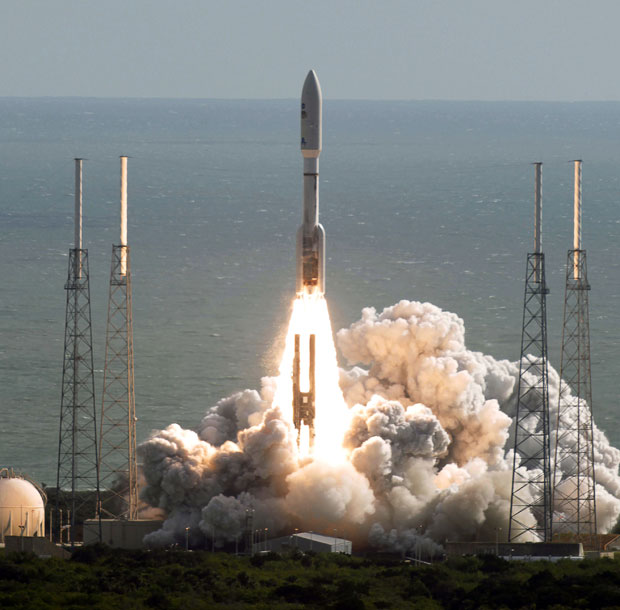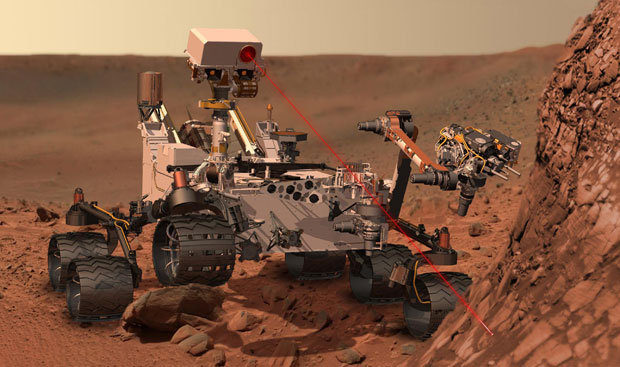Nasa’s Mars rover launches on two year mission
The “Curiosity” rover has been successfully launched from Earth on its mission to Mars to find out if life can exist or ever existed on the Red Planet.
The Atlas 5 rocket lifted off from Cape Canaveral Air Force base on Saturday morning, carrying the unmanned car-sized Mars Science Laboratory (MSL), nicknamed “Curiosity”.
The rover will take around nine months to travel the 354 million mile journey to Mars, whereupon it will being its two-year exploration.
The project, estimated to cost $2.5bn has been planned since 2003 and it was supposed to lift off in 2009, which had to be abandoned as the rover wasn’t complete in time.
Nasa has had to wait two years for the next launch window, which depended upon the alignment of the Earth with Mars.
“Mars Science Lab is on its way to Mars,” NASA launch commentator George Diller said as the spacecraft separated from the rocket.
Curiosity is expected to touch down on 6 Aug, 2012, to begin its analysis of a 96-mile wide impact basin near the Martian equator called Gale Crater.

The mission’s goal is to determine if Mars has or ever had environments to support life. It is the first astrobiology mission to Mars since the Viking probes launched in the 1970s.
The rover, is much larger than its predecessors – weighing in at 1 tonne and carrying 17 cameras and 10 science instruments. It carries its own chemistry labs, to identify elements in soil and rock samples to be dug up by the probe’s drill-tipped robotic arm.
“We have an incredible rover,” said MSL deputy project scientist Ashwin Vasavada.
“It’s the biggest and most capable scientific explorer we’ve ever sent to the surface of another planet.”
Curiosity’s planet fall will be equally ambitious – after travelling eight and half months through space the rover will deploy parachutes, jet engines and finally a crane to lower itself to the surface.
The rover’s prime mission is to look for the elements that support life. Previous rovers looked for surface water, but Curiosity will use its drilling capabilities to asses whether other ingredients for life, including possibly organic carbon, the building block for life on Earth.
“It’s a long shot, but we’re going to try,” said chief scientist John Grotzinger shortly before launch.
It will also search for elements that equally may limit the sustainability of life – such as radiation levels on the journey to Mars and on the surface itself.
The outcome of these results may affect future human exploration missions.
Curiosity is designed to have a lifespan of one Martian year, or 687 Earth days.
